Experimental Study on Active Thermal Protection for Electronic Devices Used in Deep−Downhole−Environment Exploration
Abstract
:1. Introduction
2. Experimental Setup
3. Data Reduction
3.1. Evaluation of Thermal Performance
3.2. Experimental Uncertainty
4. Results and Discussion
4.1. Comparison of Different Layouts
4.2. Development of Spiral ACP
4.3. The Impact of Working−Medium Flowrate
5. Conclusions
- Compared to the case with ACP only, the outer−ACP and inner−ACP cases extend the operating time by 32 min and 62 min, respectively. Moreover, it was confirmed that outer−ACP case might absorb almost 20% more heat than that of the inner−ACP case, implying a shorter operating time. Meanwhile, the criteria of the TCF and TVR were applied to quantitatively evaluate the performance; it was found that the inner ACP features a longer operating time due to the saving of the latent heat in the PCM container.
- A new ACP with spiral flow was developed for active thermal insulation in comparison to the straight ACP, while the operating time can be prolonged by 30%, reaching over 160 min. Simultaneously, the heat−absorption rate drops by 1.8 W, on average, and the average TCF of the spiral−ACP case increases by 1.62 times compared with that of the straight−ACP case.
- The effect of the working−medium flowrate on the thermal protection was also tested. The case with lowest flowrate, vm = 100 mL/min, provides the longest operating time due to the associated savings in PCM consumption. Consequently, the intermittent flowrate with 1 min of operation at vm = 100 mL/min and a 2−minute w stop (case 1–2) can further extend the operating time by 126.6%, reaching 5 h.
Author Contributions
Funding
Data Availability Statement
Conflicts of Interest
Nomenclature
| c | specific heat capacity, J/(kg·K) |
| M | variables and a function of the independent parameters |
| q | heat−absorption rate |
| T | internal temperature, K |
| To | outlet temperature, K |
| Ti | inlet temperature |
| Tcr | critical temperature, K |
| Tst | starting−record temperature, K |
| ∆t | time variation, min |
| ∆T | temperature variation, K |
| v | temperature−increase rate, K/min |
| vm | mass flowrate, kg/min |
| n | number of monitored temperatures |
| x | different parameters |
| Greek symbols | |
| αx | errors for each parameter |
| αM | errors for each variable |
| β | temperature−variation rate |
| λ | temperature−control factor |
| δ | temperature−difference ratio |
| Abbreviations | |
| ACP | annular cooling plate |
| ATIS | active−thermal−insulation system |
| AM | aerogel mat |
| PCM | phase−change material |
| PLA | polylactic acid |
| TCF | temperature−control factor |
| TVR | temperature−variation rate |
References
- Qian, J.; Wang, J.; Li, S. In World’s Oil Shale Available Retorting Technologies And The Forecast Of Shale Oil Production. In Proceedings of the The Eighteenth International Offshore and Polar Engineering Conference, Vancouver, BC, Canada., 6–11 July 2008. [Google Scholar]
- Suyun, H.; Wenzhi, Z.; Lianhua, H.; Zhi, Y.; Rukai, Z.; Songtao, W.; Bin, B.; Xu, J. Development potential and technical strategy of continental shale oil in China. Pet. Explor. Dev. 2020, 47, 877–887. [Google Scholar]
- Li, Y.C. Oil Production Engineering; Petroleum Industry Press: Beijing, China, 2009. [Google Scholar]
- Yeh, L. Review of heat transfer technologies in electronic equipment. J. Electron. Packag. 1995, 117, 333–339. [Google Scholar] [CrossRef]
- Xu, Y.; Xu, N.; Zhang, W.; Zhu, J. A multi−layer integrated thermal protection system with C/SiC composite and Ti alloy lattice sandwich. Compos. Struct. 2019, 230, 111507. [Google Scholar] [CrossRef]
- Fan, B.; Chen, S.; Yao, Q.; Sun, Q.; Jin, C. Fabrication of Cellulose Nanofiber/AlOOH Aerogel for Flame Retardant and Thermal Insulation. Materials 2017, 10, 311. [Google Scholar] [CrossRef] [Green Version]
- Wicklein, B.; Kocjan, A.; Salazar−Alvarez, G.; Carosio, F.; Camino, G.; Antonietti, M.; Bergstrom, L. Thermally insulating and fire−retardant lightweight anisotropic foams based on nanocellulose and graphene oxide. Nat. Nanotechnol. 2015, 10, 277–283. [Google Scholar] [CrossRef]
- Nemanic, V. Vacuum insulating panel. Vacuum 1995, 46, 839–842. [Google Scholar] [CrossRef]
- Ma, Y.; Shang, B.; Hu, R.; Luo, X. Thermal management of downhole electronics cooling in oil & gas well logging at high temperature. In Proceedings of the 2016 17th International Conference on Electronic Packaging Technology (ICEPT), Wuhan, China, 16–19 August 2016; pp. 623–627. [Google Scholar]
- Rafie, S. Thermal management of downhole oil and gas logging sensors for HTHP applications using nanoporous materials. In Proceedings of the Energy Nanotechnology International Conference, Santa Clara, CA, USA, 5–7 September 2007. [Google Scholar]
- Zhang, J.; Lan, W.; Deng, C.; Wei, F.; Luo, X. Thermal Optimization of High−Temperature Downhole Electronic Devices. IEEE Trans. Compon. Packag. Manuf. Technol. 2021, 11, 1816–1823. [Google Scholar] [CrossRef]
- He, J.; Wang, Q.; Wu, J.; Zhang, Y.; Chu, W. Hybrid thermal management strategy with PCM and insulation materials for pulsed−power source controller in extreme oil−well thermal environment. Appl. Therm. Eng. 2022, 214, 118864. [Google Scholar] [CrossRef]
- Lan, W.; Zhang, J.; Peng, J.; Ma, Y.; Zhou, S.; Luo, X. Distributed thermal management system for downhole electronics at high temperature. Appl. Therm. Eng. 2020, 180, 115853. [Google Scholar] [CrossRef]
- Shang, B.; Ma, Y.; Hu, R.; Yuan, C.; Hu, J.; Luo, X. Passive thermal management system for downhole electronics in harsh thermal environments. Appl. Therm. Eng. 2017, 118, 593–599. [Google Scholar] [CrossRef]
- Bennett, G.A. Active Cooling for Downhole Instrumentation: Design Criteria and Conceptual Design Summary; Los Alamos National Lab.: Los Alamos, NM, USA, 1986. [Google Scholar]
- Flores, A.G. Active Cooling for Electronics in a Wireline Oil−Exploration Tool; Massachusetts Institute of Technology: Cambridge, MA, USA, 1996. [Google Scholar]
- Gao, W.; Liu, K.; Su, Y.; Sheng, L.; Cao, C.; Dou, X.; Zhang, L. Active Cooling Method for Downhole Systems in High Temperature Environment. In Proceedings of the Active Cooling Method for Downhole Systems in High Temperature Environment, SPE Western Regional Meeting, San Jose, CA, USA, 23–26 April 2019. [Google Scholar]
- Soprani, S.; Haertel, J.H.K.; Lazarov, B.S.; Sigmund, O.; Engelbrecht, K. A design approach for integrating thermoelectric devices using topology optimization. Appl. Energy 2016, 176, 49–64. [Google Scholar] [CrossRef] [Green Version]
- Hughes, T.; Weerasinghe, R. CFD modelling of thermal management in downhole tools. In Proceedings of the UK HTC 2015, Bristol, UK, 7–8 September 2015. [Google Scholar]
- Sinha, A.; Joshi, Y.K. Downhole Electronics Cooling Using a Thermoelectric Device and Heat Exchanger Arrangement. J. Electron. Packag. 2011, 133, 041005. [Google Scholar] [CrossRef]
- Holbein, B.; Isele, J.; Spatafora, L.; Hagenmeyer, V.; Schulenberg, T. Heat Exchanger for Down−Hole Condensation Process Theoretical and Experimental Investigation, Considering Surrounding Fluid Properties. GRC Trans. 2016, 40, 449–456. [Google Scholar]
- Holbein, B.; Isele, J.; Spatafora, L. In Integrated cooling systems for an extended operation range of borehole tools. In Proceedings of the Transactions, Geothermal Resources Council, Annual Meeting, Reno, NV, USA, 20–23 September 2015. [Google Scholar]
- Bennett, G.A. Active Cooling for Downhole Instrumentation: Miniature Thermoacoustic Refrigerator; The University of New Mexico: Albuquerque, NM, USA, 1991. [Google Scholar]
- Alrumaidh, A.; Abushaqra, A.; Elghoneimy, M.; Nabhan, M. Studying the cooling effect of nitrified drilling fluid on bottom−hole assembly while drilling high−pressure, high−temperature wells. In Proceedings of the SPE Middle East Oil & Gas Show and Conference, Manama, Kingdom of Bahrain, 9 May 2017. [Google Scholar]
- Verma, S.; Elias, Q. Thermal management of electronics used in downhole tools. In Proceedings of the SPE Annual Technical Conference and Exhibition, San Antonio, TX, USA, 8–10 October 2012. [Google Scholar]
- Jakaboski, J.-C. Innovative Thermal Management of Electronics Used in Oil Well Logging; Georgia Institute of Technology: Atlanta, GA, USA, 2004. [Google Scholar]
- Ling, Z.; Wang, F.; Fang, X.; Gao, X.; Zhang, Z. A hybrid thermal management system for lithium ion batteries combining phase change materials with forced−air cooling. Appl. Energy 2015, 148, 403–409. [Google Scholar] [CrossRef] [Green Version]
- Qin, P.; Liao, M.; Zhang, D.; Liu, Y.; Sun, J.; Wang, Q. Experimental and numerical study on a novel hybrid battery thermal management system integrated forced−air convection and phase change material. Energy Convers. Manag. 2019, 195, 1371–1381. [Google Scholar] [CrossRef]
- Zhang, C.; Qin, J.; Yang, Q.; Zhang, S.; Bao, W. Design and heat transfer characteristics analysis of combined active and passive thermal protection system for hydrogen fueled scramjet. Int. J. Hydrog. Energy 2015, 40, 675–682. [Google Scholar] [CrossRef]
- Wang, H.Z.; Jiang, L.I.; Qin, F.; Wei, X.G. Investigation on combination of active and passive thermal protection for RBCC engine. J. Solid Rocket. Technol. 2015, 178, 369–382. [Google Scholar]
- Marley, C.D.; Driscoll, J.F. Modeling an Active and Passive Thermal Protection System for a Hypersonic Vehicle. In Proceedings of the 55th AIAA Aerospace Sciences Meeting, Grapevine, TX, USA, 9–13 January 2017. [Google Scholar]
- Gou, J.-J.; Chang, Y.; Yan, Z.-W.; Chen, B.; Gong, C.-L. The design of thermal management system for hypersonic launch vehicles based on active cooling networks. Appl. Therm. Eng. 2019, 159, 113938. [Google Scholar] [CrossRef]
- Li, W.Q.; Qu, Z.G.; He, Y.L.; Tao, Y.B. Experimental study of a passive thermal management system for high−powered lithium ion batteries using porous metal foam saturated with phase change materials. J. Power Sources 2014, 255, 9–15. [Google Scholar] [CrossRef]
- Gulfam, R.; Zhang, P.; Meng, Z. Advanced thermal systems driven by paraffin−based phase change materials—A review. Appl. Energy 2019, 238, 582–611. [Google Scholar] [CrossRef]
- Feng, L.; Zhou, S.; Li, Y.; Wang, Y.; Zhao, Q.; Luo, C.; Wang, G.; Yan, K. Experimental investigation of thermal and strain management for lithium−ion battery pack in heat pipe cooling. J. Energy Storage 2018, 16, 84–92. [Google Scholar] [CrossRef]
- Yuan, F.; Li, M.-J.; Ma, Z.; Jin, B.; Liu, Z. Experimental study on thermal performance of high−temperature molten salt cascaded latent heat thermal energy storage system. Int. J. Heat Mass Tran. 2018, 118, 997–1011. [Google Scholar] [CrossRef]
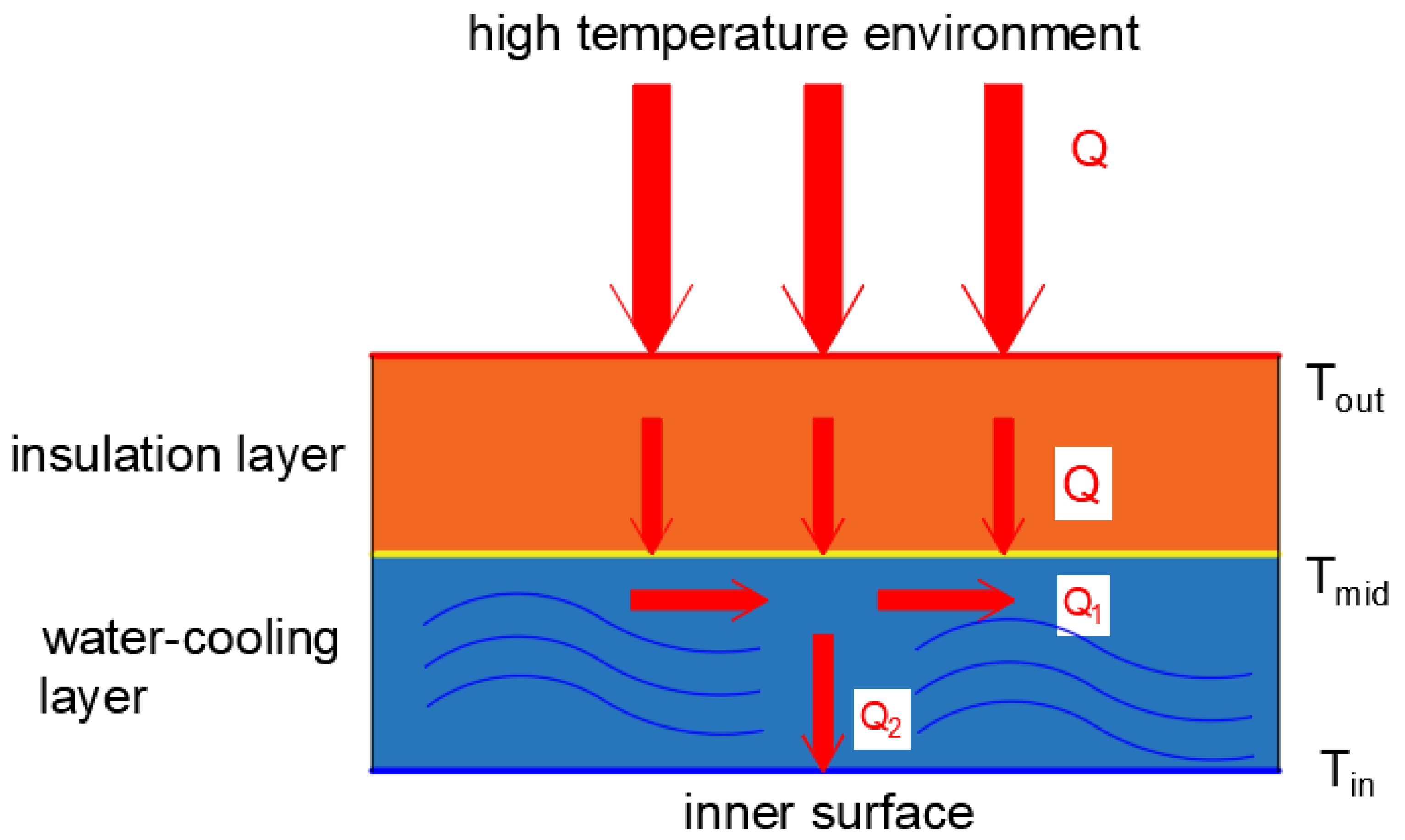
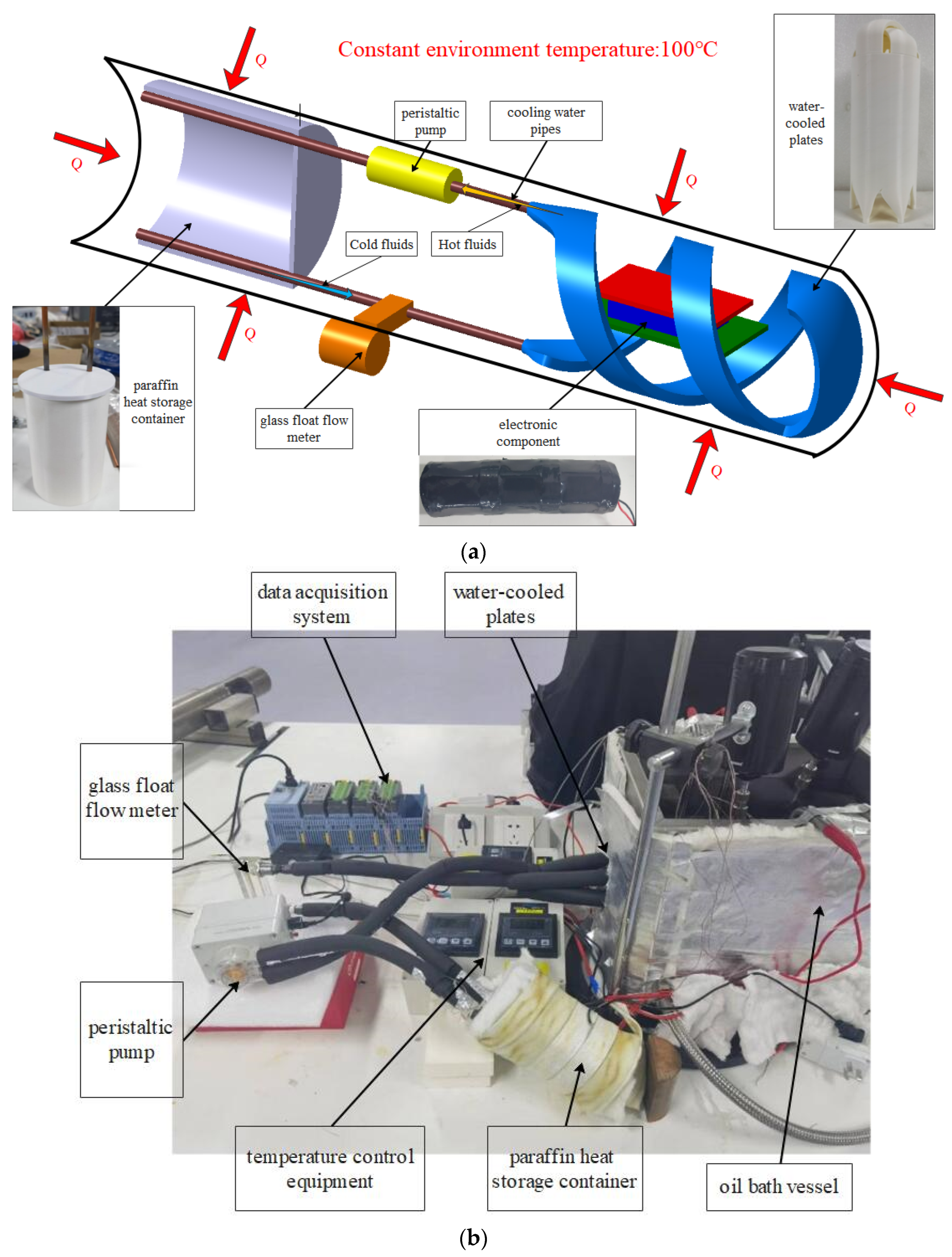
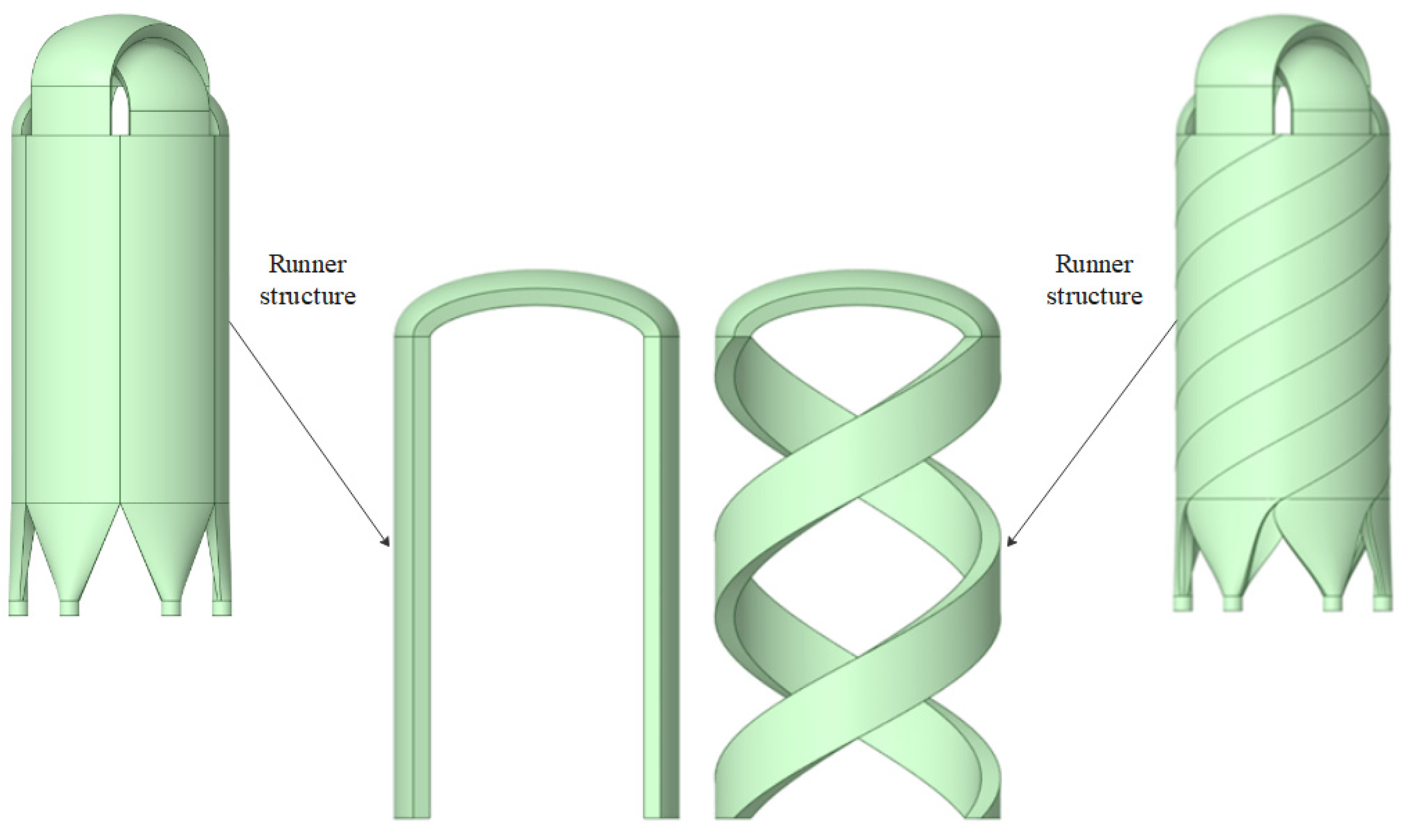
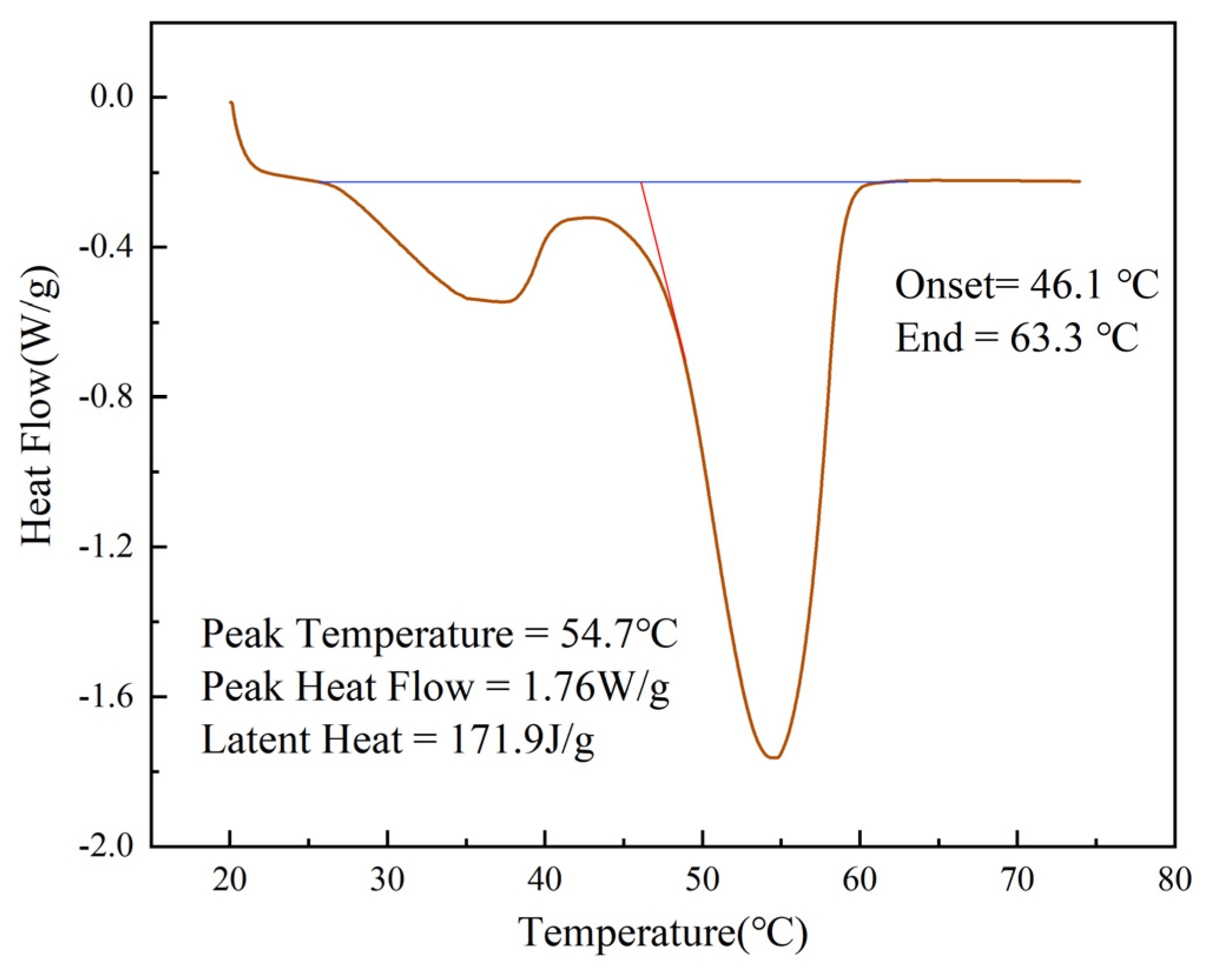

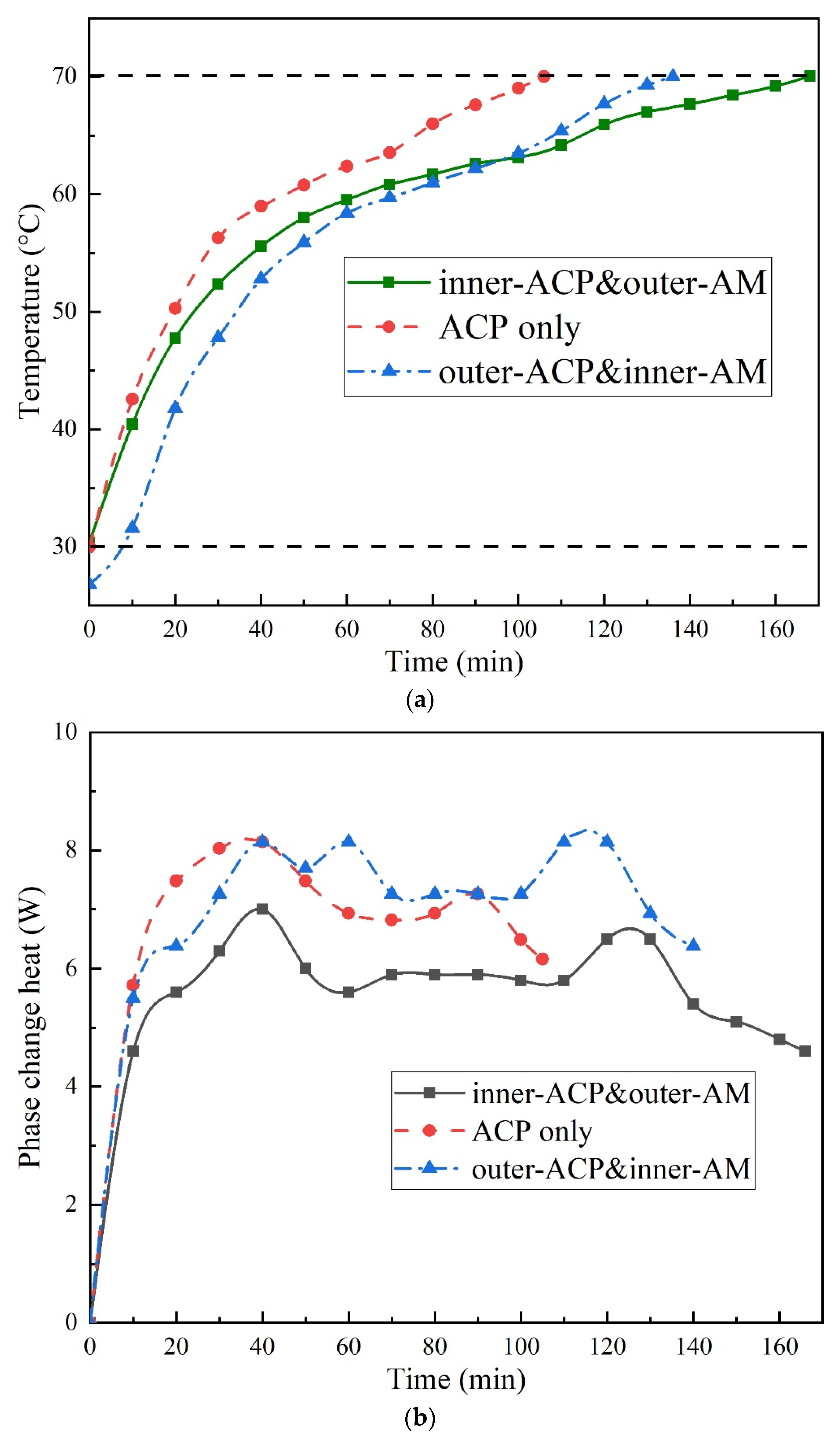
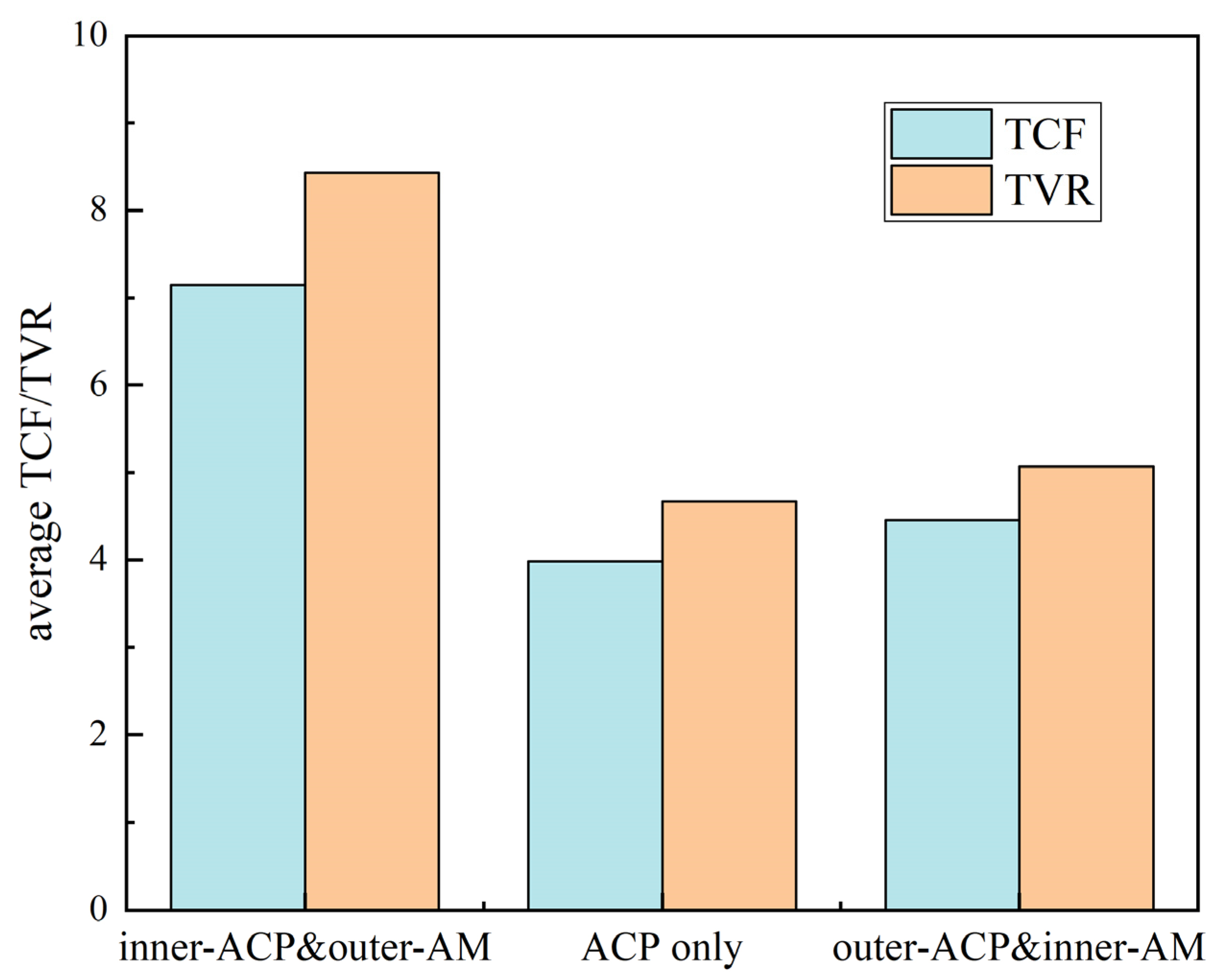

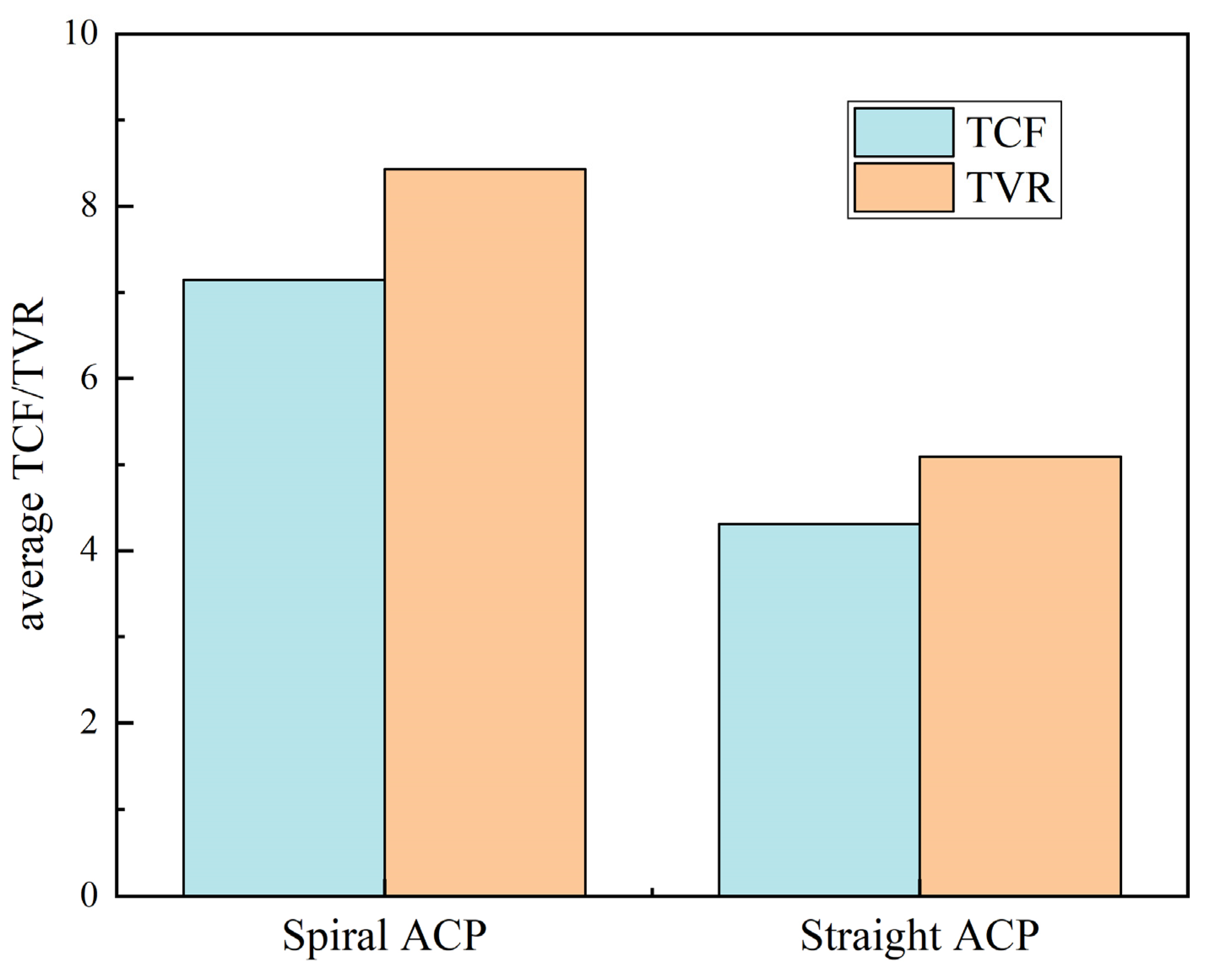
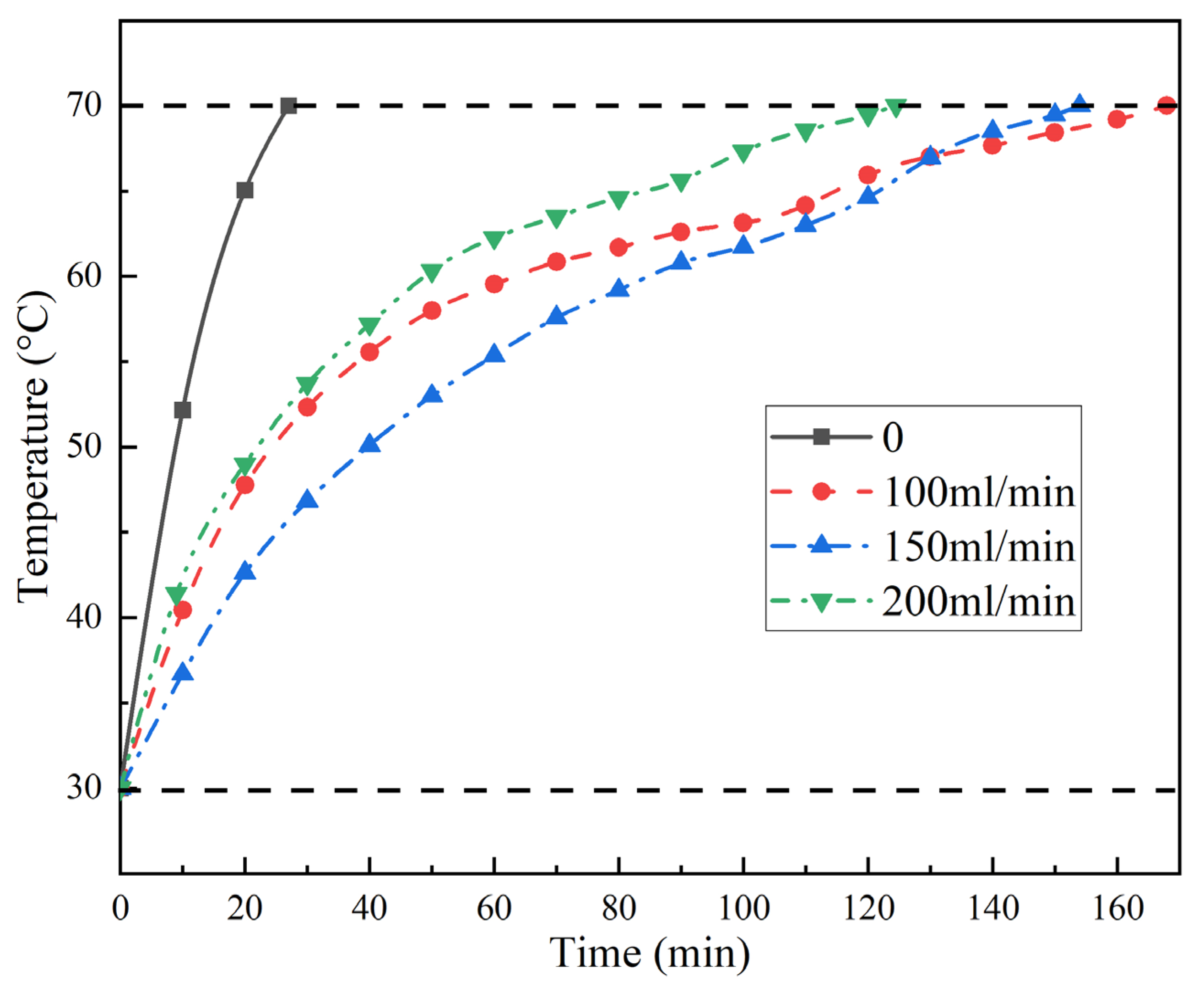
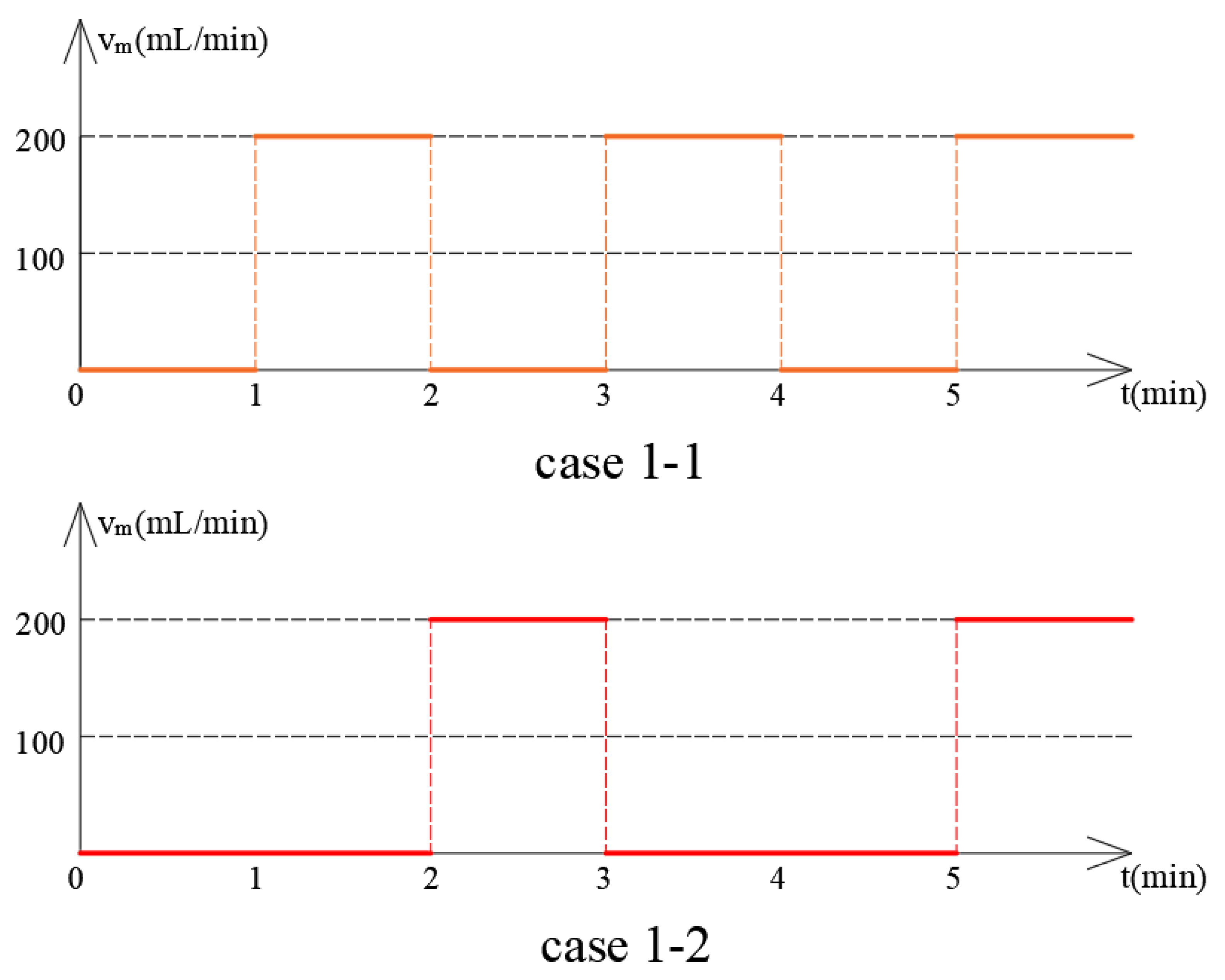

Disclaimer/Publisher’s Note: The statements, opinions and data contained in all publications are solely those of the individual author(s) and contributor(s) and not of MDPI and/or the editor(s). MDPI and/or the editor(s) disclaim responsibility for any injury to people or property resulting from any ideas, methods, instructions or products referred to in the content. |
© 2023 by the authors. Licensee MDPI, Basel, Switzerland. This article is an open access article distributed under the terms and conditions of the Creative Commons Attribution (CC BY) license (https://creativecommons.org/licenses/by/4.0/).
Share and Cite
Ma, S.; Zhang, S.; Wu, J.; Zhang, Y.; Chu, W.; Wang, Q. Experimental Study on Active Thermal Protection for Electronic Devices Used in Deep−Downhole−Environment Exploration. Energies 2023, 16, 1231. https://doi.org/10.3390/en16031231
Ma S, Zhang S, Wu J, Zhang Y, Chu W, Wang Q. Experimental Study on Active Thermal Protection for Electronic Devices Used in Deep−Downhole−Environment Exploration. Energies. 2023; 16(3):1231. https://doi.org/10.3390/en16031231
Chicago/Turabian StyleMa, Shihong, Shuo Zhang, Jian Wu, Yongmin Zhang, Wenxiao Chu, and Qiuwang Wang. 2023. "Experimental Study on Active Thermal Protection for Electronic Devices Used in Deep−Downhole−Environment Exploration" Energies 16, no. 3: 1231. https://doi.org/10.3390/en16031231
APA StyleMa, S., Zhang, S., Wu, J., Zhang, Y., Chu, W., & Wang, Q. (2023). Experimental Study on Active Thermal Protection for Electronic Devices Used in Deep−Downhole−Environment Exploration. Energies, 16(3), 1231. https://doi.org/10.3390/en16031231







